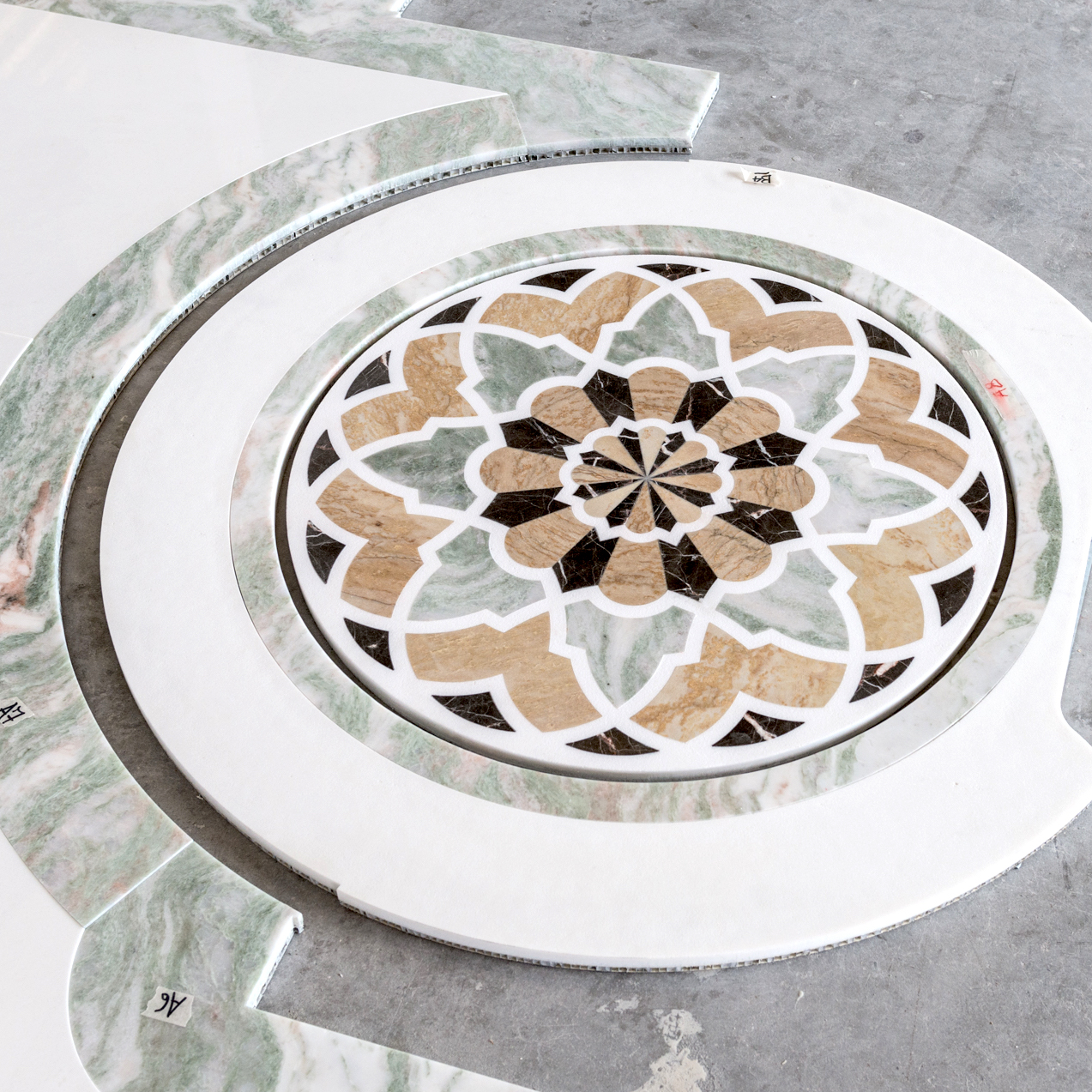The Timeless Charm of Marble at Sea
For centuries, marble has adorned palaces, monuments, and museums. In ancient times, it was so valued that it was often reserved for godly statues or royal residences.
But how can this traditionally heavy stone match with the dynamic demands of a superyacht?
In an industry where every kilogram matters for performance and safety, innovation was needed.
And indeed, it came.
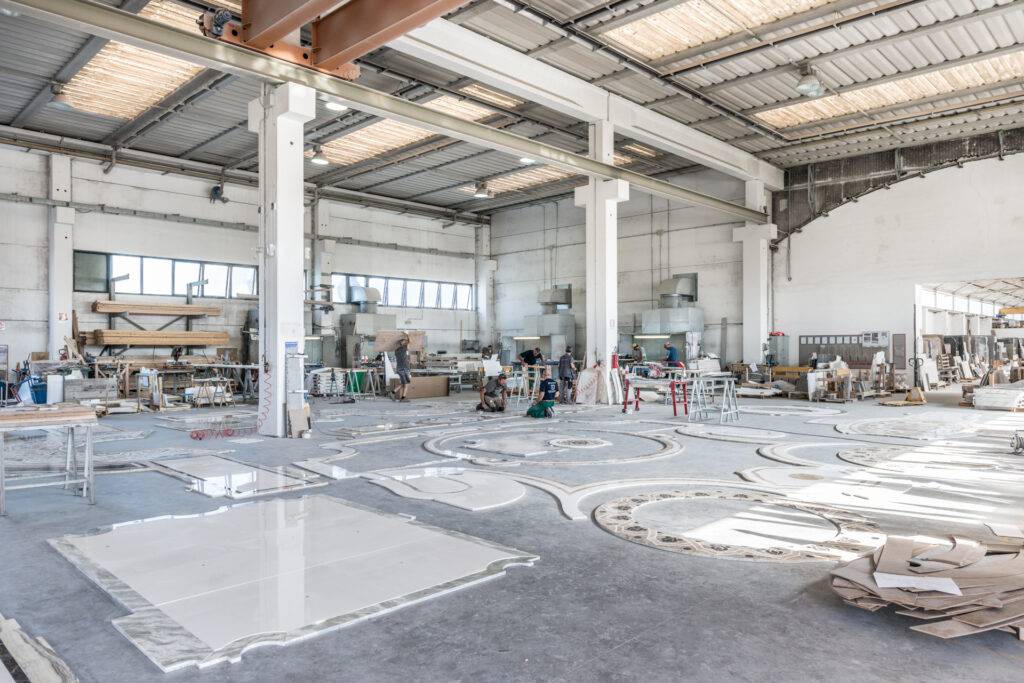
Aviation-inspired Revolution
The aerospace industry has often paved the way for groundbreaking innovations. One prime example is the honeycomb—a composite material featuring an alveolar structure sandwiched between thin slabs.
Originally developed for the aerospace sector due to its lightness and strength, it's now making waves in the marine industry.
Thin a marble slab down to its minimum thickness, and it becomes not only light but inevitably delicate. But, merge this wafer-thin layer of marble (sometimes merely 3mm) with the sturdy honeycomb's hexagonal structure, and you achieve something revolutionary: a panel that retains the aesthetic qualities of natural marble yet is much lighter than its original slab and ensures a balance between strength and lightness, being both robust and surprisingly easy to handle.
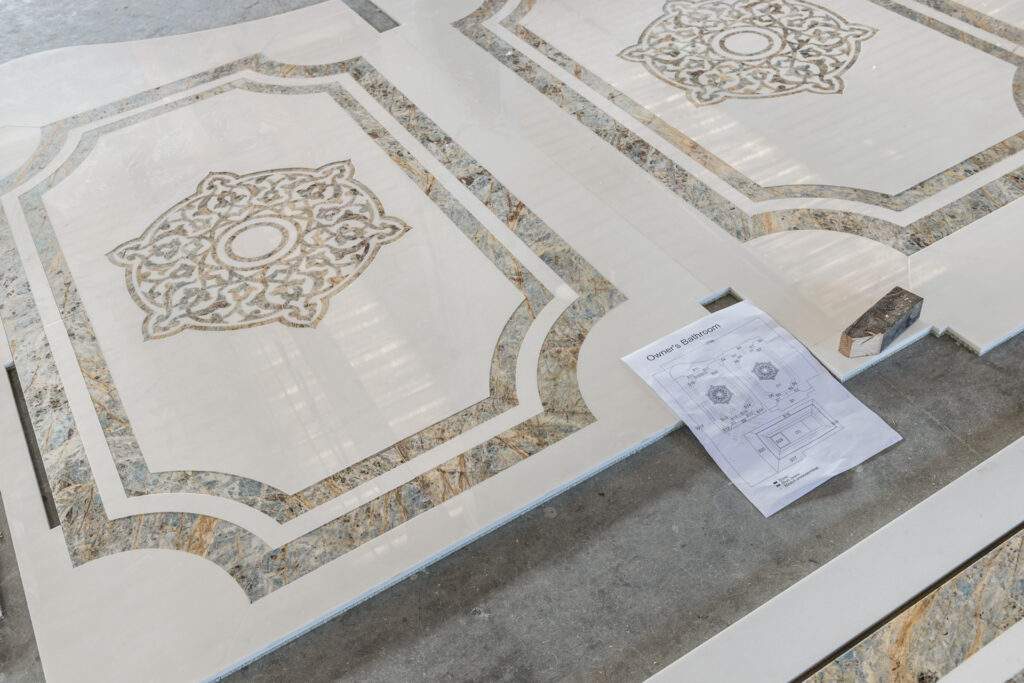
Weight on Boats: Why It's Crucial
At sea, weight is very important, transcending mere digits on a scale. Extra weight can directly affect a boat’s safety and stability, impacting fuel consumption, responsiveness during maneuvers, and top attainable speeds.
Given these demands, it's essential to pick materials that are not only lightweight but also durable and strong, especially considering the marine environment's challenges.
Here, lightweight marble emerges as the perfect choice.
Practical Benefits Onboard
Lightweight marble has ushered in a significant shift in marine design. Beyond its elegant appearance, it comes with a host of functional benefits.
Imagine a marble slab measuring 2x1 meters, weighing over 100 kg. Now, with lightening techniques, this weight is slashed by up to 70%, easing transport, handling, and installation while minimizing damage risks.
This isn't just operationally efficient for yacht companies but also opens up new avenues for luxury boat designers. It translates into unique design solutions where beauty and function merge without compromising the yacht's performance.
Moreover, for those wondering about its robustness, lightweight marble assures even better bending and compression resistance than the original slab, all while maintaining its flexibility.
It’s a material that boldly confronts the challenges of the sea, promising longevity with minimal upkeep.
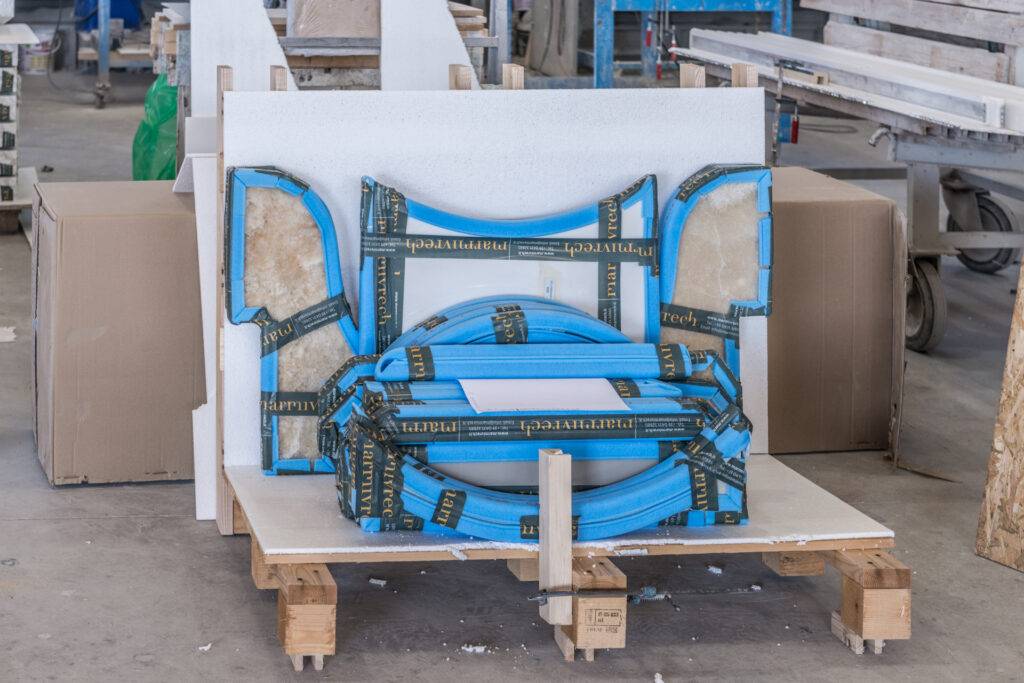
Thickness and Customization: The New Horizon
In the past, using marble on a boat often meant weight and design compromises.
But today's design landscape has shifted. With lightweight marble, customization possibilities are vast. Ranging from a few millimeters to several centimeters in thickness, it ensures the material's integrity without any trade-offs. This flexibility has redefined creative possibilities on superyachts, providing designers with fresh avenues to explore.
Given the natural stone's variability, choosing the optimal thickness can sometimes be challenging. In such instances, Marmi Vrech offers targeted guidance. Depending on the stone's intended use and type, our deep understanding of the materials enables us to recommend the perfect marble thickness-to-panel combination, ensuring each design is not just visually captivating but structurally sound.
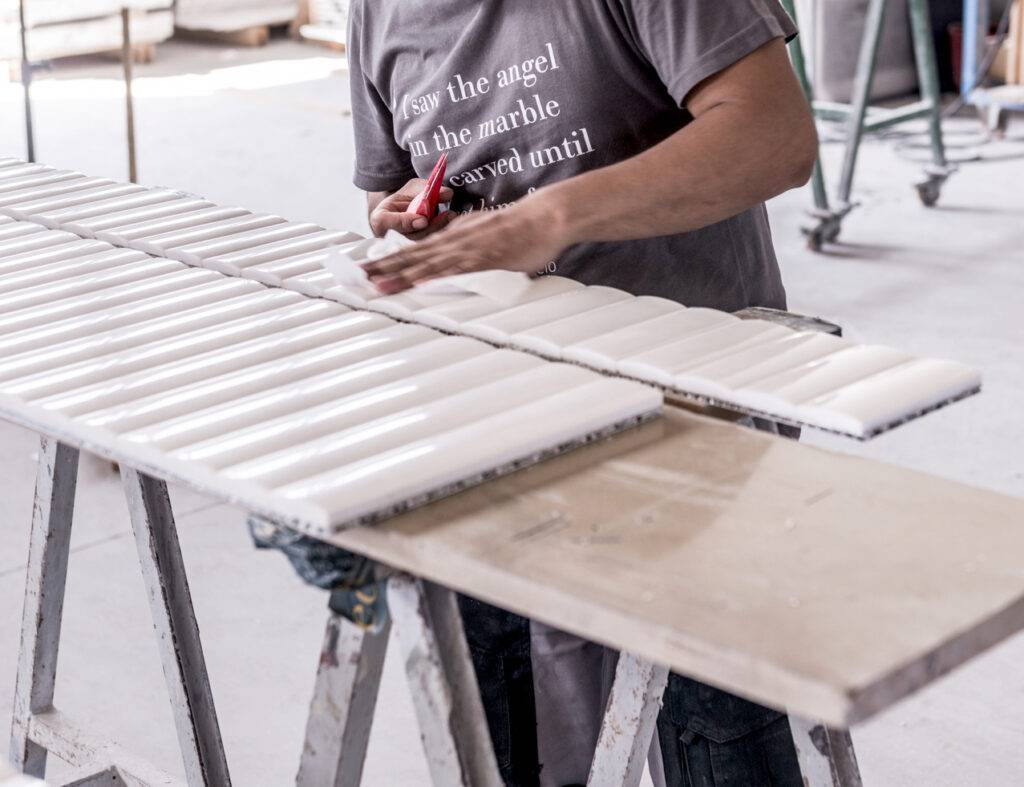
A Subtle Yet Momentous Revolution
Boating, especially within the refined realms of yachts and superyachts, is an ever-evolving industry, always at the forefront of embracing solutions that blend aesthetics, luxury, function, and sustainability.
Thanks to lightweight marble and the expertise of companies like Marmi Vrech, the future not only promises more efficient boats but also heralds a design journey that boldly navigates the waves of innovation.
